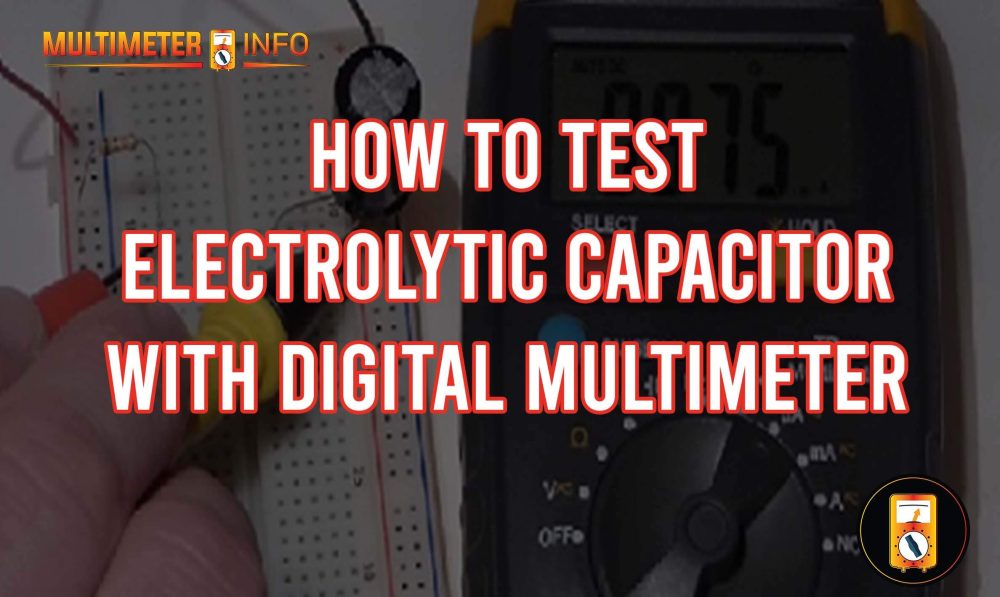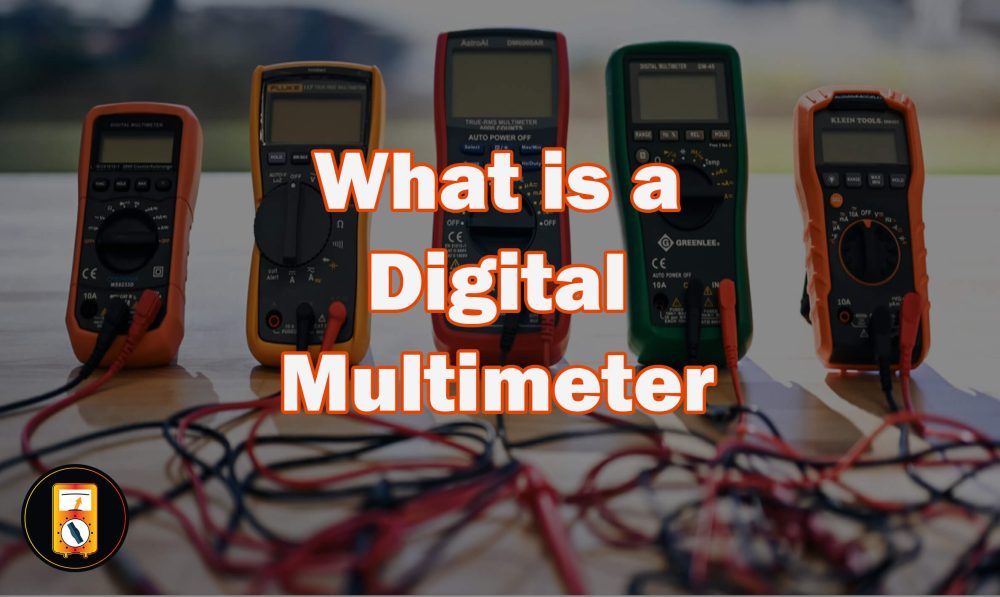Are you looking for an easy way to start testing electrolytic capacitors? It can be done quickly with just a few tools and the correct instructions. This blog post will discuss why it’s vital to test electrolytic capacitors and how you can use a digital multimeter (DMM) to get accurate results in no time! You’ll also learn what specific settings your DMM will need and some tips on troubleshooting common problems that could arise. Don’t worry if you’re not familiar with electronics – by the end of this post, even beginner hobbyists should understand how to test these components confidently!
Common Symptoms Of A Bad Electrolytic Capacitor:
Leaking Fluid:
If you notice any fluid leaking from the capacitor, it clearly indicates that it has malfunctioned.
Bulging Top:
A healthy electrolytic capacitor will be completely flat on the top, whereas if it is bulged or swollen, this indicates a problem with the internal components.
Corroded Terminals:
If you can visibly see rust or corrosion on either of the terminals of the capacitor, this means that its connection to other parts is compromised and needs to be replaced.
Shorted Out Circuitry:
When an electrolytic capacitor shorts out its circuitry, it interferes with completing electrical circuits in your device and, therefore, should be replaced.
Unusual Sounds:
A capacitor can make strange noises, such as humming, buzzing, or popping, when it is malfunctioning. This can be a sign of imminent failure and should be addressed right away.
Diminished Power Output:
Suppose you are noticing that your device is performing at a lower capacity than usual. In that case, this may be caused by a failing electrolytic capacitor that needs to be replaced to restore normal power levels.
Overheating Issues:
Suppose the voltage regulator or other components connected to the capacitor are overheating more quickly than expected. In that case, this could mean that the electrolytic capacitor has failed and needs replacing before further damage occurs.
Unstable Voltage Levels:
A failing capacitor can cause input voltages to become unstable, so if you’re experiencing sudden power drops or surges from your device, this could be a sign of a bad electrolytic capacitor.
Unexpected Restarts:
Suppose the device is randomly restarting or turning on and off by itself. In that case, this could indicate that the electrolytic capacitor no longer provides sufficient power levels to maintain the flow of electricity throughout the circuit.
Slow Response Time:
When an electronic device takes longer than usual to respond to commands, this can mean that its electrolytic capacitor has failed and needs replacing for it to operate normally.
These symptoms should not be ignored as they will only worsen over time and potentially cause costly damage to the device. If you detect any of the above signs, it is best to replace the capacitor immediately to avoid further issues.
How To Test Electrolytic Capacitor with Digital Multimeter
Testing an electrolytic capacitor with a digital multimeter is vital in troubleshooting circuits and ensuring that components function correctly. The multimeter can be used to measure the capacitance of the capacitor, as well as its voltage rating, leakage current, and equivalent series resistance (ESR).
- Ensure the multimeter is set to measure capacitance in farads (F).
- Connect the capacitor’s leads to the multimeter probes, ensuring that the negative lead of the capacitor is connected to the COM probe and the positive lead is connected to VΩmA or Ω probe.
- Look at the reading on your multimeter display and compare it with the rated value of your capacitor. It should be within 5% of its rated value. If not, replace it as soon as possible.
- To measure voltage rating, set your multimeter to the DCV setting and connect one of its probes across each terminal of your capacitor. The voltage rating should be close enough to what’s written on the capacitor.
- To measure leakage current, set your multimeter to Ohms setting and connect its probes across each terminal of the capacitor. The leakage current should be very low (less than 10 microamps). If it’s higher, the capacitor needs to be replaced.
- Finally, set your multimeter to the ESR setting and measure the capacitor’s equivalent series resistance (ESR). It should not exceed its rated value by more than 20%.
Testing an electrolytic capacitor with a digital multimeter is vital in ensuring that components are functioning correctly in electrical circuits or other projects. Following these steps, you can quickly and accurately test any electrolytic capacitor for capacitance, voltage rating, leakage current, and equivalent series resistance.
Tips for preventing failures of electrolytic capacitors:
Use the proper capacitor type:
Electrolytic capacitors are designed for specific applications, so make sure to use a capacitor that is appropriate for your particular application.
Check ESR ratings:
Ensure your application’s electrolytic capacitors have appropriate Equivalent Series Resistance (ESR) ratings. This will help ensure optimal functionality of the capacitor in its intended environment.
Keep an eye on temperature:
Extreme temperatures can cause electrolytic capacitors to fail prematurely. It’s essential to keep an eye on the operating temperature and take steps to reduce it if necessary.
Follow the installation instructions:
Every capacitor has its own instructions during installation that must be followed to ensure proper operation.
Avoid overvoltage:
Ensure that the applied voltage does not exceed the rated voltage of the electrolytic capacitor, as this can cause it to fail prematurely.
Store correctly:
Electrolytic capacitors should be stored in a dry, well-ventilated environment with temperatures between -30°C and 85°C to prevent premature failure due to extreme temperature changes.
Monitor humidity levels:
High humidity levels can reduce electrolytic capacitors’ lifespan significantly, so ensure you keep an eye on humidity levels in your facility or home if an electrolytic capacitor is being used there.
Check for leakage current:
If the capacitor leaks, it’s not performing its intended function and should be replaced.
Exercise proper maintenance:
Regular inspection and maintenance of electrolytic capacitors are recommended to ensure they operate correctly and that no problems develop over time.
Monitor current draw:
Please pay attention to the amount of current being drawn by an electrolytic capacitor, as too much can cause it to fail prematurely. By monitoring this number, you can take steps to reduce it if necessary. Following these tips will help you prevent failures of electrolytic capacitors and ensure their optimal operation in your application.
Frequently Asked Questions:
Test an electrolytic capacitor with a digital multimeter, you must set the meter to measure resistance in ohms (Ω). Connect one end of the probes to each terminal of the capacitor. If there is no reading on your meter, the capacitor has gone open circuit and needs replacing. If there is a reading, it should be close to 0 Ω if the plate spacing inside the capacitor is correct. If significantly higher than 0 Ω, it may indicate a problem such as corrosion or plate leakage. You can also measure capacitance by setting your digital multimeter to the appropriate range. However, this may not be accurate because of the quality of the multimeter and any leakage or corrosion within the capacitor. It is best to consult a professional technician if you encounter any issues when testing an electrolytic capacitor with a digital multimeter.
Yes, a digital multimeter can be used to measure capacitance. However, the accuracy of this measurement may be affected by the multimeter’s quality and any leakage or corrosion within the capacitor. If you have any problems while testing an electrolytic capacitor with a digital multimeter, it is best to consult a professional technician.
Yes, it is possible to use a regular multimeter to test an electrolytic capacitor. However, it may not be as accurate as a digital multimeter due to its lower resolution and accuracy levels. It is best to connect the probes in series with a known resistor to get reliable readings from a regular multimeter. It will help ensure accurate measurements of resistance and capacitance. Again, if you encounter any issues when testing an electrolytic capacitor with a standard multimeter, it is best to consult a professional technician.
Conclusion:
Finally, testing an electrolytic capacitor with a digital multimeter is simple. You can identify faulty capacitors and determine their current value in just a few steps. The capacitor must be replaced if its reading is out of range or it returns values that differ from the rated values. Regularly testing capacitors ensures that they are operating at peak efficiency and helps to avoid potential problems later on.





